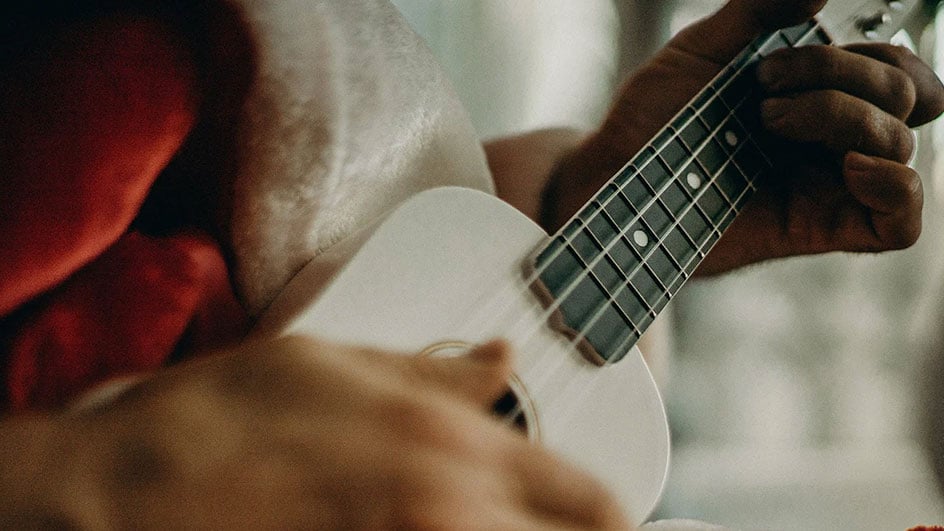
Dec 19, 2019
These days, there simply is no Christmas without Christmas music.
As soon as Thanksgiving is over, a signal sounds and every medium where music can be played surrenders to the flood of Christmas songs. Exposure takes many forms.
You might hear Rockin Around the Christmas Tree during Home Alone. Or We Wish You A Merry Christmas could surprise you in a Hershey Kiss commercial. Worst of all, you could endure Mariah Carey’s All I Want for Christmas Is You blaring incessantly throughout your local mall.
For some, the sudden ubiquity of Christmas music brings joy. The carols and standards we’ve grown up with weave together to form a welcome background playlist for the holiday season.
There’s a reason big-name artists keep making Christmas albums: the music sells.
(Plus, the music licenses have often expired, so only the artist gets paid, not the songwriter. Here’s a helpful post about music licensing if you’re curious.)
For others, the nonstop holiday tunes lead to insanity — no, really. I guess there are pros and cons to everything.
But how did we get here? For a culture that’s obsessed with holiday tunes, precious little attention is paid to where it all came from.
In this post, we’ll explore the origins of Christmas music and examine the three main subgenres — in case you need help choosing the right song for a project.
By the way, if you need background Christmas music for your project, we’ve got an entire playlist for you. Maybe take a listen while you read this post.
The 3 Types of Background Christmas Music
There are numerous instances where you might want to use Christmas songs in your project. Perhaps you’re filming a horror movie set during the holidays, or you’re recording a Christmas advertisement with puppets.
But seriously, there are a lot of use cases for this genre of music.
To strike the right chord, you need to choose the right kind of song. Luckily, there are a few different subgenres to choose from when it comes to holiday music.
Carols
Of all the types of Christmas music, carols are the most historic. Some date back to the 12th century in Europe, particularly in France, Italy, and Germany. For example, classics like “Silent Night” and “O Christmas Tree” have German origins.
In the 13th century, Francis of Assisi, an Italian friar and preacher, wrote down many of the carols that were sung in his church. And whenever something is written down, it’s easier for more people to learn it.
And so Christmas carols spread throughout Italy.
Assisi later became a saint, but it’s unclear how large a role his work with Christmas carols played.
Most carols didn’t start out as religious songs per se. Instead they were folk songs and hymns that celebrated the winter season. Some songs even had dance accompaniments. The word carol actually means to dance in a ring, not unlike a carousel that spins in a circle.
In England, carols appear on the scene in the 1400s, when Jon Audely, a priest and poet, wrote a list of 25 carols of Christmas. Audely’s collection of 25 carols were sung in churches around England, so more people began to learn them.
Eventually small groups of people began meeting up and signing Christmas carols door-to-door. Apparently there was a bowl of cider involved, which carolers would let people drink from in exchange for a gift.
It seems this was acceptable at the time.
Either way, these carolers are the originators of the trope we now see all over popular culture.
In the 17th and 18th centuries, a couple of ambitious folklorists collected all of the carols being sung around England and published them in songbooks. And so carols became even more popular.
When settlers moved from England to North America they brought their carols with them. A few hundred years later, the tradition lives on. Carols remain an indelible part of Christmas and the holidays in general.
Classical Music
While carols were undoubtedly the songs of the people, there was also another strain of Christmas music being produced by classical composers.
Vivaldi, Mendelssohn, Tchaikovsky, and Bach all wrote and performed Christmas songs. Handel wrote the classic “While Shepherds Watched Their Flocks By Night” and perhaps “Joy to the World.”
Many of these compositions were commissioned by the Church and were written to be performed during service — if the facilities had a proper organ and a sufficiently talented player.
Like carols, some of these songs had roots in local traditions. When Mykola Leontovych wrote “Carol of the Bells,” he took a great deal of inspiration from a Ukranian folk chant.
Going to listen to classical music became a tradition in certain countries, and to this day symphonies continue to put on Christmas-themed performances.
Contemporary
Christmas music didn’t change much in the 1800s, though the genre still remained popular. Between the 1930s and 1950s, Christmas music experienced a kind of renaissance.
Rather than focus on the religious aspects of the holiday, these songs emphasized other Christmas motifs, like Santa Clause, the Christmas tree, and snowmen. And instead of being sung by people in the street or church choirs, these songs were performed by popular musicians.
And these songs were, and are, very popular. “Santa Claus Is Coming to Town” which was written all the way back in 1934, is the most played song of the past 50 years according to the ASCAP.
During this new age of Christmas music everyone from Bing Crosby to Bob Hope to Judy Garland composed and performed holiday songs.
Even after the 1950s, the craze didn’t abate.
The Supremes, The Jackson Five, Frank Sinatra, and The Beach Boys all covered “Santa Claus Is Coming to Town.” George Michael performed “Last Christmas” during his Wham! days. Bob Dylan even did a Christmas album.
Though it’s a far cry from the carols sung in 13th century Europe, contemporary Christmas music is a mainstay of the holiday season. And it’s no wonder why. People absolutely adore Christmas music.
So if you’re working on a Christmas-themed project, be sure to include some music — whether that’s a classical concerto, an acapella carol, or something more modern, like Bruce Springsteen yelling “Santa Claus Is Coming to Town.”
Either way, there’s nothing better to evoke the Holiday Spirit in a video or podcast than some Christmas music.
